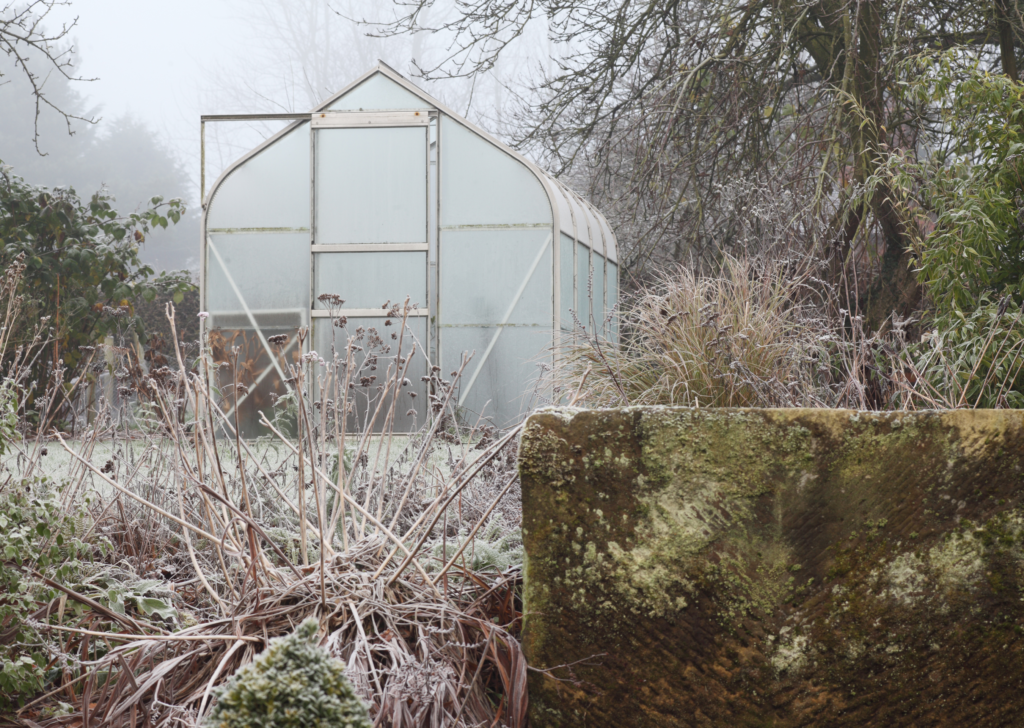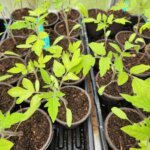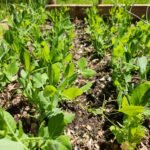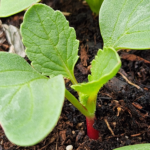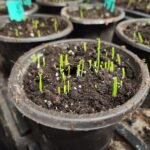As gardeners, we eagerly await spring, counting the days until we can get our hands in the soil. However, what if there was a way to start your vegetable garden in the dead of winter? Enter winter sowing! A simple, low-maintenance method that allows you to start hardy vegetable crops outdoors in mini-greenhouses made from recycled containers. This technique can give you a head start on the growing season, producing strong, resilient plants that adapt quickly once transplanted into the garden.
This post contains affiliate links. If you use these links to buy something we may earn a commission. Thanks.
What is Winter Sowing?
Winter sowing is the process of starting seeds outdoors during the colder months using containers like milk jugs, clear plastic bins, or soda bottles. These containers act as mini-greenhouses, trapping warmth and moisture while protecting seedlings from extreme weather. When the time is right, the seeds naturally germinate, producing hardy plants that are better acclimated to outdoor conditions than their indoor-started counterparts.
Unlike traditional indoor seed-starting (find the full how-to article on that here), winter sowing eliminates the need for grow lights, seedling trays, and constant monitoring. The method is particularly beneficial for gardeners with limited indoor space or those looking for a low-maintenance way to get an early start on their crops.
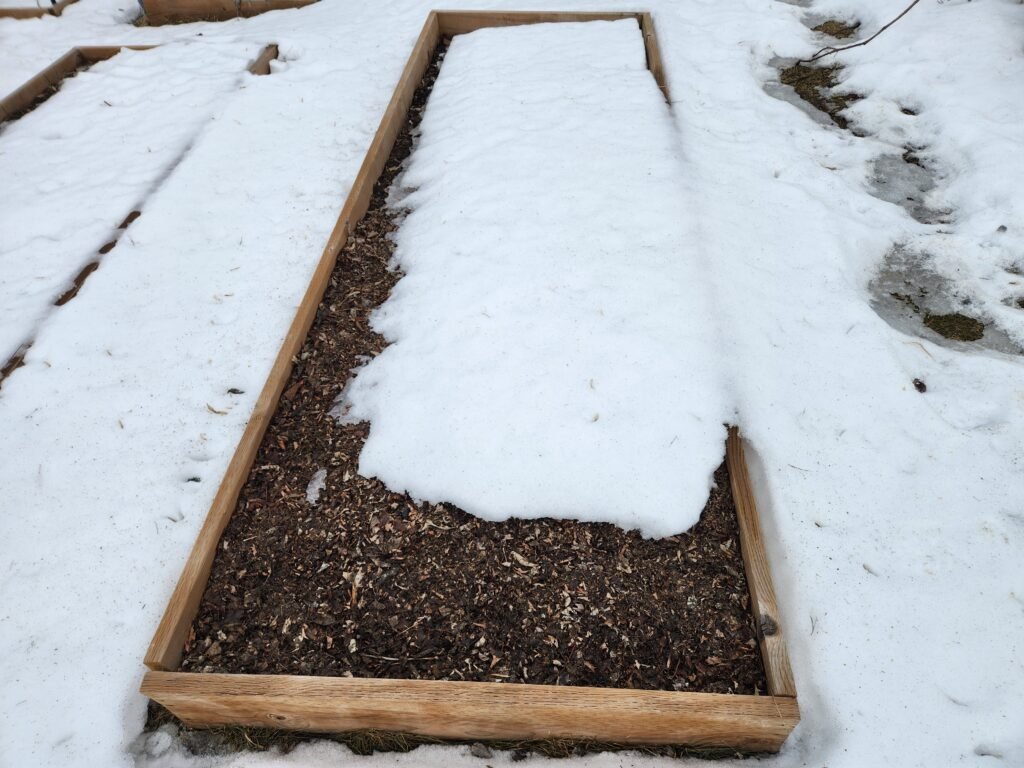
Which Vegetable Crops Benefit Most from Winter Sowing?
Not all vegetable crops are suited for winter sowing. The method works best for cold-hardy vegetables that require or tolerate stratification (exposure to cold to break dormancy). Here are some of the best candidates:
1. Brassicas (Cole Crops)
- Broccoli
- Cabbage
- Kale
- Brussels sprouts
- Cauliflower
Brassicas thrive in cooler weather, making them ideal for winter sowing. By the time spring arrives, these crops will be ready for transplanting, ensuring an early harvest.
2. Root Vegetables
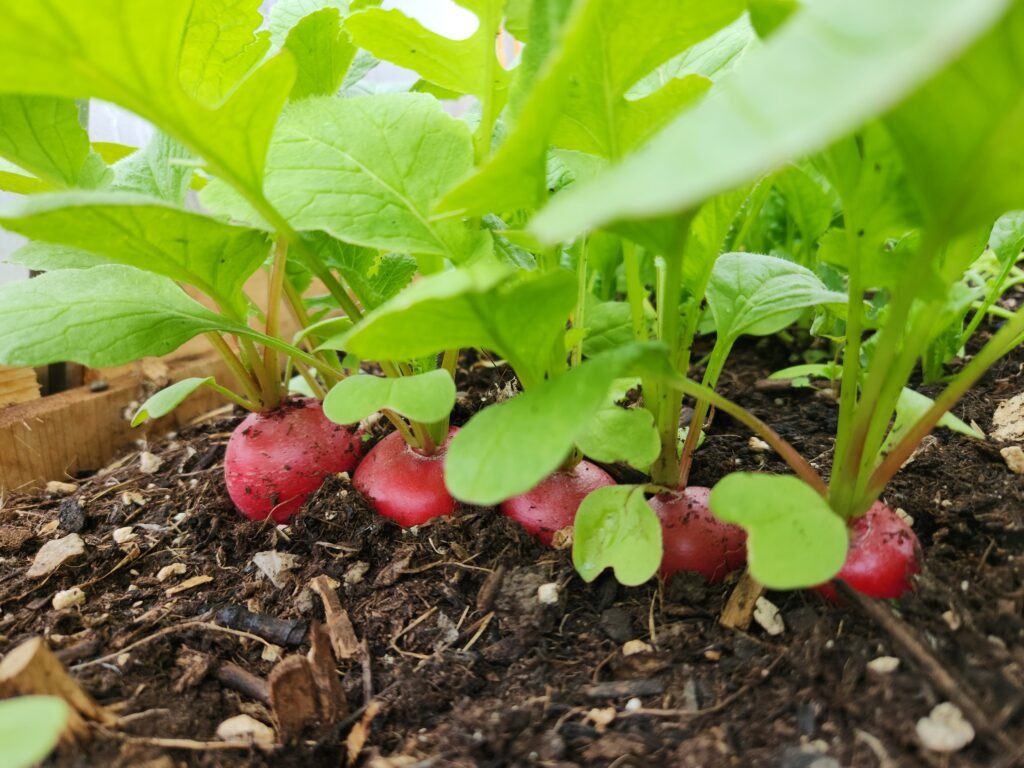
Many root crops require cold exposure for proper germination, making winter sowing a natural fit. These crops will germinate at the first signs of spring and establish strong root systems.
3. Leafy Greens
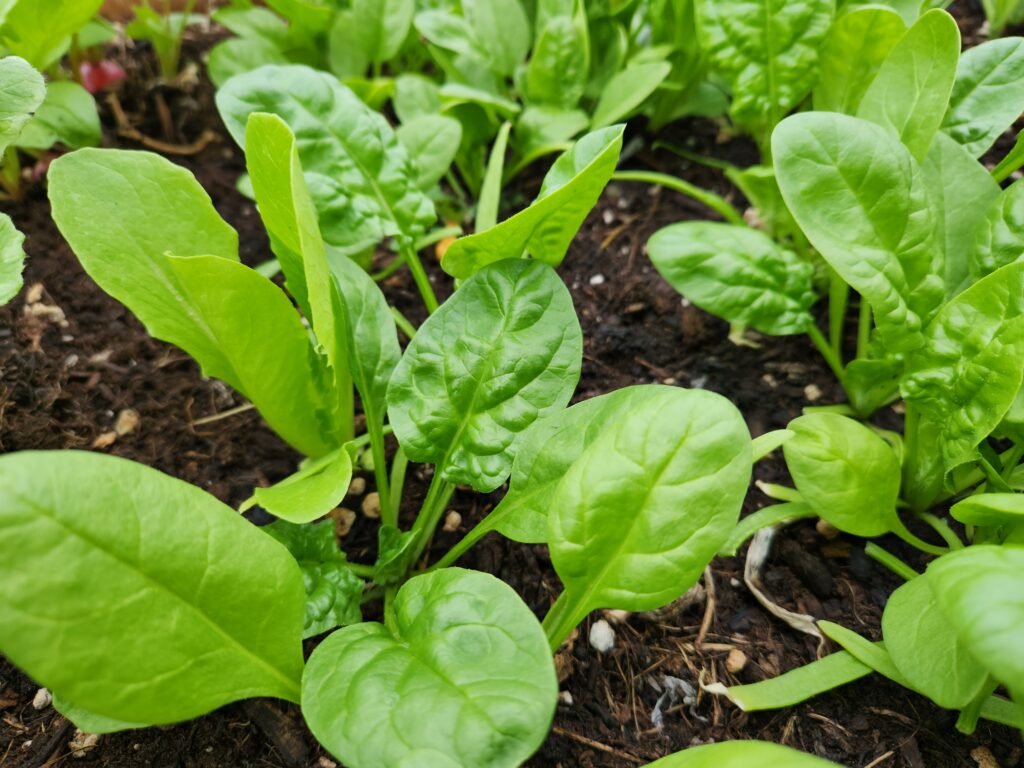
Leafy greens tolerate frost well and will thrive when winter sown. They can be transplanted or left to grow in place once the weather warms.
4. Alliums (Onions & Leeks)
- Onions
- Leeks
- Chives
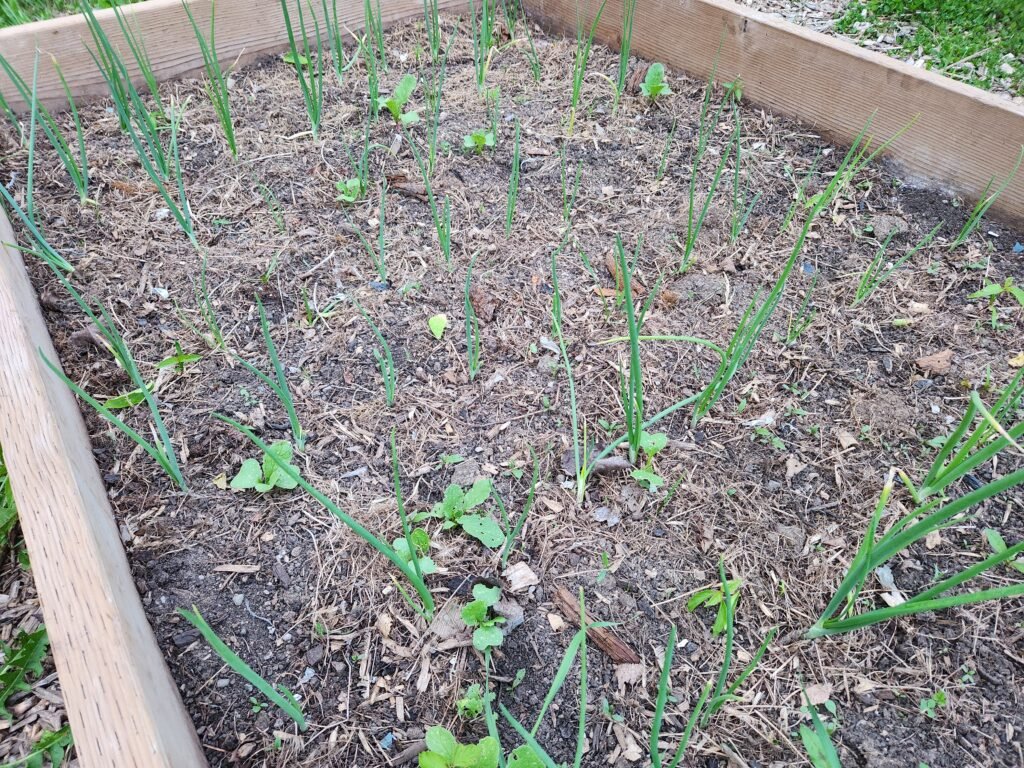
Onions and leeks benefit from an early start, as they require a long growing season. Winter sowing allows them to get a jumpstart without requiring indoor space.
Crops That Do Not Benefit from Winter Sowing
While many crops thrive with winter sowing, some do not tolerate cold exposure or require warmer soil temperatures to germinate. Avoid winter sowing these vegetables:
1. Warm-Season Crops
These crops need warmth to germinate and grow. Starting them too early in cold conditions can cause poor germination or weak seedlings.
2. Legumes
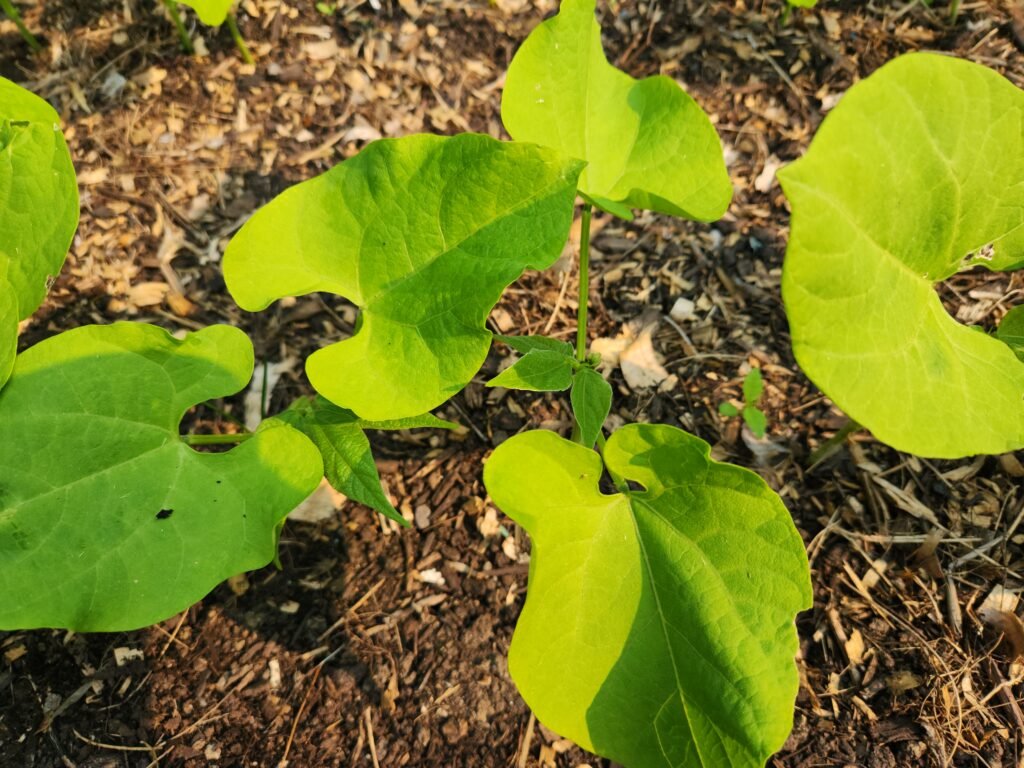
- Beans
- Peas (some varieties can tolerate cold but are best direct-sown in early spring)
Beans require warm soil to germinate, while peas often perform better when direct-sown in early spring rather than winter sown.
How to Winter Sow Vegetable Seeds In Containers
Winter sowing is simple and requires minimal materials. Follow these steps to set up your winter sowing containers:
Materials Needed:
- Clear or semi-clear plastic containers (milk jugs, soda bottles, or bins)
- Utility knife or scissors
- Potting mix (not garden soil)
- Seeds of cold-hardy vegetables
- Duct tape or masking tape
- Labels or a permanent marker
- Watering can or spray bottle
Step-by-Step Guide:
- Prepare the Containers – Cut your plastic container in half, leaving one side attached as a hinge. Poke drainage holes in the bottom for excess water to escape.
- Add Soil – Fill the bottom half with about 3-4 inches of potting mix.
- Plant the Seeds – Scatter seeds evenly, following the recommended depth on the seed packet.
- Water Thoroughly – Moisten the soil to help seeds settle.
- Seal the Container – Tape the container shut and remove the lid for ventilation.
- Label and Place Outside – Write the crop name on the container, then set it outside in a spot that receives natural sunlight.
Winter Sowing Directly in the Garden Bed
While container winter sowing is popular, some gardeners prefer to sow seeds directly into garden beds for a more natural approach. This method mimics how plants reseed themselves in nature, allowing cold-hardy crops to sprout when the conditions are right. This can be done as soon as the top layer of soil is workable.
How to Winter Sow in a Garden Bed:
- Choose a Suitable Location – Select a well-draining bed with full sun exposure.
- Prepare the Soil – Loosen the soil and remove any weeds or debris.
- Sow Cold-Hardy Seeds – Scatter seeds of crops like spinach, carrots, or lettuce at the recommended depth.
- Mulch Lightly – Cover seeds with a thin layer of straw or leaf mulch to protect them from harsh weather while allowing light penetration.
- Mark the Area – Label where seeds are sown to avoid disturbing them later.
- Let Nature Take Its Course – Snow and rain will provide moisture, and seeds will germinate when conditions are ideal.
This method works well for self-seeding vegetables and eliminates the need for transplanting. It is best suited for hardy greens, root crops, and alliums.
Maintaining Your Winter Sown Seeds
Once your containers or garden bed seeds are placed outdoors, minimal maintenance is required. Check them periodically to ensure they haven’t dried out or become waterlogged. When daytime temperatures rise consistently above freezing, seedlings may need additional ventilation. Simply open the container or cut larger air holes to prevent overheating.
FAQ: Common Questions About Winter Sowing
No, winter sowing works because many seeds naturally experience cold stratification in nature. Hardy vegetable seeds can survive freezing temperatures and germinate when conditions become favorable.
Winter sowing is most effective in temperate climates where there is a clear winter season. In very warm climates, this method may not provide a significant advantage since winters are too mild.
Seeds will sprout when conditions are right – usually in early spring as temperatures rise and daylight increases.
Generally, no. Snow and rain keep the soil moist, but in particularly dry winters, you may need to add water occasionally.
Once seedlings develop strong roots and outdoor temperatures are consistently above freezing, harden them off by opening the containers for longer periods before transplanting them into the garden.
Conclusion
Winter sowing is an easy, low-maintenance way to get a head start on your vegetable garden without the hassle of indoor seed-starting. By choosing cold-hardy crops, using simple recycled containers, and letting nature do the work, you can grow strong, resilient plants that thrive in your garden. Whether you’re a beginner or an experienced gardener, winter sowing can be a game-changer in your gardening routine. Try it this winter and enjoy an early harvest of fresh, homegrown vegetables!

